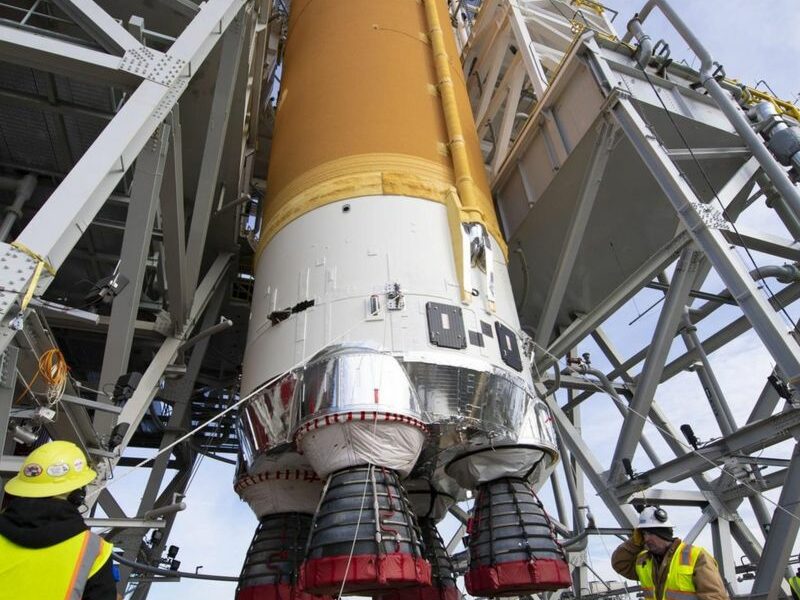
NASA has been developing a “mega rocket” to send humans to the Moon and, eventually, Mars. The last critical tests of the giant launcher’s core section are expected to take place within the next few weeks.
In southern Mississippi, close to the fringe with Louisiana, engineers have been getting an exceptional bit of equipment through its movements. A monster orange chamber is suspended on a similarly forcing steel structure called the B-2 test remain on the grounds of Stennis Space Center, a NASA test office outside the city of Bay St Louis. Estimating about 65m (212ft) through and through, the chamber speaks to the center of a space vehicle more impressive than anything the world has seen since the 1960s. It’s known as the Space Launch System (SLS) and it comprises of the fluid fueled center stage – with four ground-breaking RS-25 motors at its base – and two strong fuel promoters which are tied to the sides. The completely collected vehicle gives the gigantic push power important to shoot space travelers off the Earth and heave them towards the Moon. Under NASA’s Artemis program, the following man and the main lady will be dispatched to the lunar surface in 2024. It will be the principal run arriving on Earth’s just normal satellite since Apollo 17 of every 1972. It might utilize innovation created for the space transport, yet from multiple points of view; the SLS is a cutting edge beneficiary to the Saturn V, the massive rocket that flung the Apollo lunar missions. Following a time of improvement, the SLS is currently moving toward a basic stage. A year-long program of testing for the center stage is reaching a conclusion. Called the Green Run, it’s intended to resolve any issues before the rocket’s lady flight, booked for November 2021. On 12 January this year, the primary SLS center stage was dispatched to Stennis on a scow from the New Orleans processing plant where it was amassed. It was then lifted by cranes and introduced in a vertical situation on the B-2 test stand. Ryan McCabe, SLS Green Run test conductor at Stennis Space Center, revealed to BBC News: “When you really observe the genuine article, with the genuine aeronautics, the genuine tanks – the fluid hydrogen tank which holds 500,000 gallons and the fluid oxygen tank with more than 200,000 gallons – it is a unimaginable vehicle.”
“We’re extremely blessed to have the option to put it through a lot of hardship: power it up, do release checks, even pressurize a few frameworks,” says Ryan McKibben. “One of the experiments, experiment five, we wound up gimballing the motors – that is the point at which we move them around powerfully so you can do course redresses during flight. It’s been loads of fun.” During its first mission one year from now, known as Artemis-1, the SLS will dispatch an unscrewed Orion container on a circle around the Moon. It will permit NASA to assess the container before space travelers are permitted on. The staying two center stage tests are critical. Number seven, known as the wet dress practice (WDR) includes a full stacking of the center stage tanks with fluid hydrogen (LH2) – the rocket’s fuel – and fluid oxygen (LOX), which ignites the fuel. Together, these are known as fuels. We’ll go through around fourteen days taking a gander at the information to ensure all the frameworks acted true to form,” John Shannon, VP and SLS program administrator at Boeing, There is no reasonable sign so far of the course where a Joe Biden organization may take the human spaceflight program. The Artemis exertion appreciates bipartisan help. In any case, some Capitol Hill administrators may not really be as married to the course of events, reported a year ago by Mike Pence, of landing people on the Moon by 2024. There’s no uncertainty that the Moon program has recovered a portion of the energy of the Apollo time. Mr. McKibben says he is in amazement of what the Saturn V engineers moved during the 1960s. It’s not lost on him that the B-2 test stand was worked to test the five motors of the Saturn’s first stage.





































































































































































































































































































































































































































































































































































































































































































































RSS